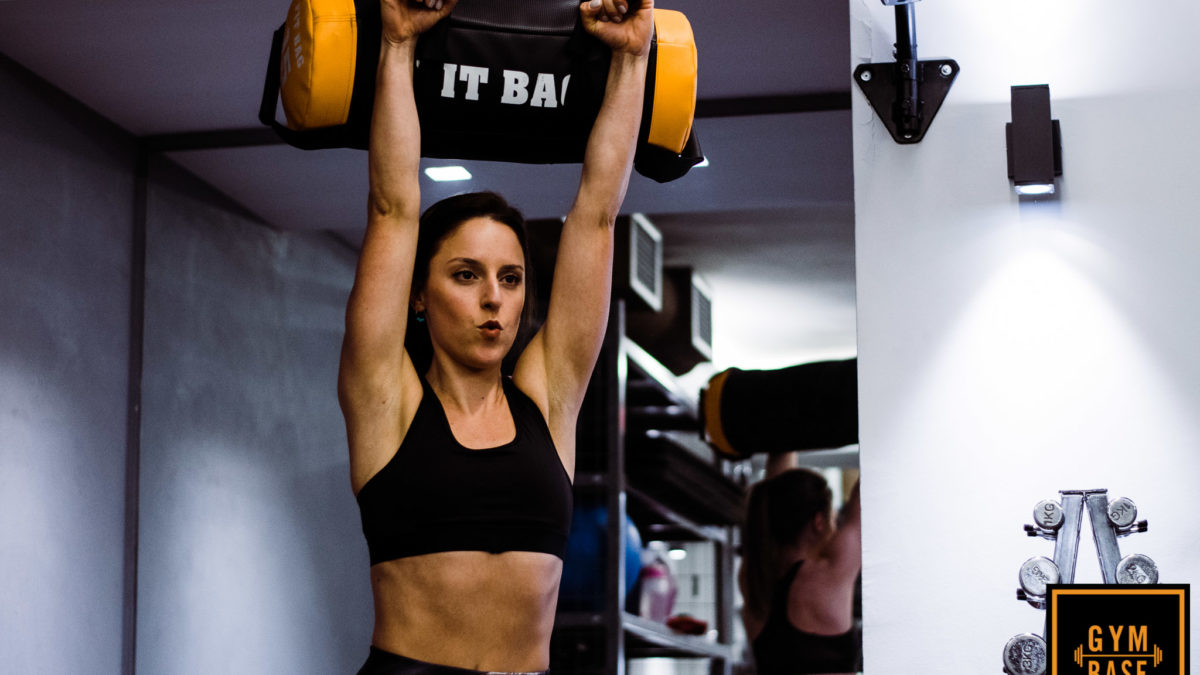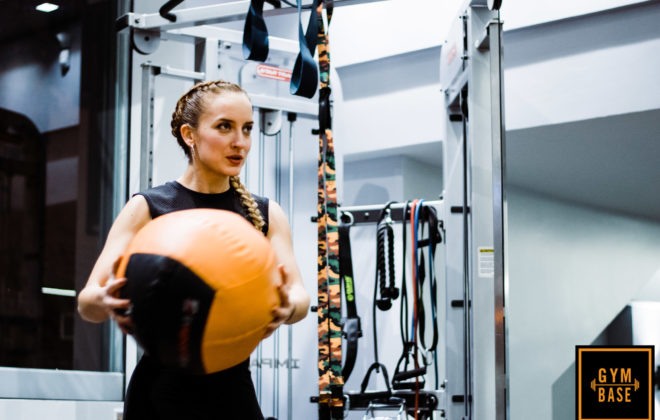Generating muscle power & RFD – the 2 secrets for maximum performance and functionality
In both everyday life and sports, all moves last up to a maximum of 250ms, and especially in sports, they do not exceed the 150ms. In other words, everyone in order to be able to cope efficiently with the various required moves should act at great speed.
It is therefore perceived that the time to develop the maximum of the power is quite limited. For this reason, all experts conclude that in order to be efficient and functional, both in the demands of everyday life and in sports, what matters in not our maximum strength, but the percentage of power that can be produced in this limited time. Therefore, what matters most is the production of as much muscle strength as possible and the rate of force development (RFD).
For example the training of a Bodybuilding athlete and a gymnast athlete are different because their sports require completely different elements. The bodybuilding athletes are engaged in resistance exercises of isolated muscle groups with maximum and submaximal loads, thus increasing their maximum power, doing them with slow movements and on particular orbits (mostly non-physical), which make them quite cumbersome. On the other hand, the gymnast athletes have clearly less maximum strength but the duration of their exercises is small and require bigger muscle strength and cooperation of all body muscles.
And there is a simple question: Which one will be more efficient and operational in a state of emergency (eg avoiding a passing car) or in another sport activity (eg running 100m)? The answer is the one that can achieve maximum strength in a short period of time. That is, the one who has been trained in order to be able to produce muscle power and RFD: the gymnast athlete.
With the example above, we wanted to show you that for an efficient and functional human body, what matters is the production of muscle power and RFD and not just the maximum strength. This is why the Functional Training is more efficient that the typical gym training.
References:
Aagaard, P. «Training-Induced Changes in Neural Function.» [In eng]. Exerc Sport Sci Rev 31, no. 2 (Apr 2003): 61-7.
Aagaard, P., and J. L. Andersen. «Correlation between Contractile Strength and Myosin Heavy Chain Isoform Composition in Human Skeletal Muscle.» [In eng]. Med Sci Sports Exerc 30, no. 8 (Aug 1998): 1217-22.
Aagaard, P., E. B. Simonsen, J. L. Andersen, P. Magnusson, and P. Dyhre-Poulsen. «Increased Rate of Force Development and Neural Drive of Human Skeletal Muscle Following Resistance Training.» [In eng]. J Appl Physiol 93, no. 4 (Oct 2002): 1318-26.
Baker, M. K., D. J. Kennedy, P. L. Bohle, D. Campbell, J. H. Wiltshire, and M. A. Singh. «Core Self-Evaluation as a Predictor of Strength Training Adoption in Older Adults.» [In eng]. Maturitas 68, no. 1 (Jan 2011): 88-93.
Bottaro, M., S. N. Machado, W. Nogueira, R. Scales, and J. Veloso. «Effect of High Versus Low-Velocity Resistance Training on Muscular Fitness and Functional Performance in Older Men.» [In eng]. Eur J Appl Physiol 99, no. 3 (Feb 2007): 257-64.
Brill, P.A. «Exercise Your Independence: Functional Fitness for Older Adults.» Journal of Aging and Physical Activity 16 (2008): S88–S89.
Childs, J. D., D. S. Teyhen, P. R. Casey, K. A. McCoy-Singh, A. W. Feldtmann, A. C. Wright, J. L. Dugan, S. S. Wu, and S. Z. George. «Effects of Traditional Sit-up Training Versus Core Stabilization Exercises on Short-Term Musculoskeletal Injuries in Us Army Soldiers: A Cluster Randomized Trial.» [In eng]. Phys Ther 90, no. 10 (Oct 2010): 1404-12.
Collins, K., B. L. Rooney, K. J. Smalley, and S. Havens. «Functional Fitness, Disease and Independence in Community-Dwelling Older Adults in Western Wisconsin.» [In eng]. WMJ 103, no. 1 (2004): 42-8.
Cormie, P., M. R. McGuigan, and R. U. Newton. «Developing Maximal Neuromuscular Power: Part 1–Biological Basis of Maximal Power Production.» [In eng]. Sports Med 41, no. 1 (Jan 1 2011): 17-38.
Fielding, R. A., N. K. LeBrasseur, A. Cuoco, J. Bean, K. Mizer, and M. A. Fiatarone Singh. «High-Velocity Resistance Training Increases Skeletal Muscle Peak Power in Older Women.» [In eng]. J Am Geriatr Soc 50, no. 4 (Apr 2002): 655-62.
Garland, T., Jr., H. Schutz, M. A. Chappell, B. K. Keeney, T. H. Meek, L. E. Copes, W. Acosta, et al. «The Biological Control of Voluntary Exercise, Spontaneous Physical Activity and Daily Energy Expenditure in Relation to Obesity: Human and Rodent Perspectives.» [In eng]. J Exp Biol 214, no. Pt 2 (Jan 15 2011): 206-29.
Herzog, W. «Mechanical Properties and Performance in Skeletal Muscles.» In Biomechanics in Sport. 21-32: Blackwell Science Ltd, 2008.
Hibbs, A. E., K. G. Thompson, D. French, A. Wrigley, and I. Spears. «Optimizing Performance by Improving Core Stability and Core Strength.» [In eng]. Sports Med 38, no. 12 (2008): 995-1008.
Hikida, R. S., R. S. Staron, F. C. Hagerman, S. Walsh, E. Kaiser, S. Shell, and S. Hervey. «Effects of High-Intensity Resistance Training on Untrained Older Men. Ii. Muscle Fiber Characteristics and Nucleo-Cytoplasmic Relationships.» [In eng]. J Gerontol A Biol Sci Med Sci 55, no. 7 (Jul 2000): B347-54.
Kraemer, W. J., B. J. Noble, M. J. Clark, and B. W. Culver. «Physiologic Responses to Heavy-Resistance Exercise with Very Short Rest Periods.» [In eng]. Int J Sports Med 8, no. 4 (Aug 1987): 247-52.
Kraemer, W. J., and N. A. Ratamess. «Fundamentals of Resistance Training: Progression and Exercise Prescription.» [In eng]. Med Sci Sports Exerc 36, no. 4 (Apr 2004): 674-88.
McGill, Stuart. «Core Training: Evidence Translating to Better Performance and Injury Prevention.» Strength & Conditioning Journal 32, no. 3 (2010): 33-46 10.1519/SSC.0b013e3181df4521.
Neptune, R. R., C. P. McGowan, and J. M. Fiandt. «The Influence of Muscle Physiology and Advanced Technology on Sports Performance.» [In eng]. Annu Rev Biomed Eng 11 (2009): 81-107.
Newton, Robert U., and William J. Kraemer. «Developing Explosive Muscular Power: Implications for a Mixed Methods Training Strategy.» Strength & Conditioning Journal 16, no. 5 (1994): 20-31.
O’Brien, T. D., N. D. Reeves, V. Baltzopoulos, D. A. Jones, and C. N. Maganaris. «Strong Relationships Exist between Muscle Volume, Joint Power and Whole-Body External Mechanical Power in Adults and Children.» [In eng]. Exp Physiol 94, no. 6 (Jun 2009): 731-8.
Pereira, A., M. Izquierdo, A. J. Silva, A. M. Costa, E. Bastos, J. J. Gonzalez-Badillo, and M. C. Marques. «Effects of High-Speed Power Training on Functional Capacity and Muscle Performance in Older Women.» [In Eng]. Exp Gerontol (Jan 2 2012).
Reed, C. A., K. R. Ford, G. D. Myer, and T. E. Hewett. «The Effects of Isolated and Integrated ‘Core Stability’ Training on Athletic Performance Measures: A Systematic Review.» [In eng]. Sports Med 42, no. 8 (Aug 1 2012): 697-706.
Romero-Franco, N., E. Martinez-Lopez, R. Lomas-Vega, F. Hita-Contreras, and A. Martinez-Amat. «Effects of Proprioceptive Training Program on Core Stability and Center of Gravity Control in Sprinters.» [In eng]. J Strength Cond Res 26, no. 8 (Aug 2012): 2071-7.
Stone, M. H., H. S. O’Bryant, L. McCoy, R. Coglianese, M. Lehmkuhl, and B. Schilling. «Power and Maximum Strength Relationships During Performance of Dynamic and Static Weighted Jumps.» [In eng]. J Strength Cond Res 17, no. 1 (Feb 2003): 140-7.
Stone, Michael H., Gavin Moir, Mark Glaister, and Ross Sanders. «How Much Strength Is Necessary?». Physical Therapy in Sport 3, no. 2 (2002): 88-96.
Trappe, S., M. Godard, P. Gallagher, C. Carroll, G. Rowden, and D. Porter. «Resistance Training Improves Single Muscle Fiber Contractile Function in Older Women.» [In eng]. Am J Physiol Cell Physiol 281, no. 2 (Aug 2001): C398-406.
Trappe, S., D. Williamson, M. Godard, D. Porter, G. Rowden, and D. Costill. «Effect of Resistance Training on Single Muscle Fiber Contractile Function in Older Men.» [In eng]. J Appl Physiol 89, no. 1 (Jul 2000): 143-52.
Weiss, Tiana, Jerica Kreitinger, Hilary Wilde, Chris Wiora, Michelle Steege, Lance Dalleck, and Jeffrey Janot. «Effect of Functional Resistance Training on Muscular Fitness Outcomes in Young Adults.» Journal of Exercise Science & Fitness 8, no. 2 (2010): 113-22.
Willardson, J. M. «Core Stability Training: Applications to Sports Conditioning Programs.» [In eng]. J Strength Cond Res 21, no. 3 (Aug 2007): 979-85.
Yoke, M., and C. Kennedy. Functional Exercise Progressions. Montery, CA: Healthy Learning Publications, 2004.





